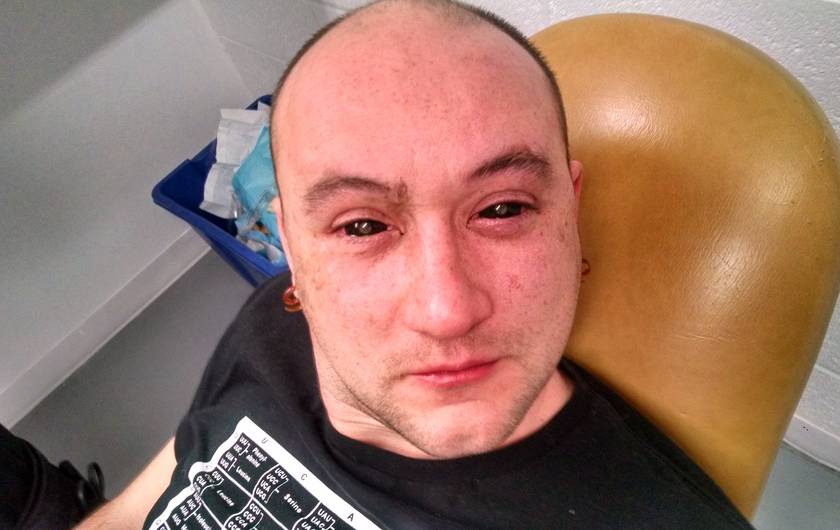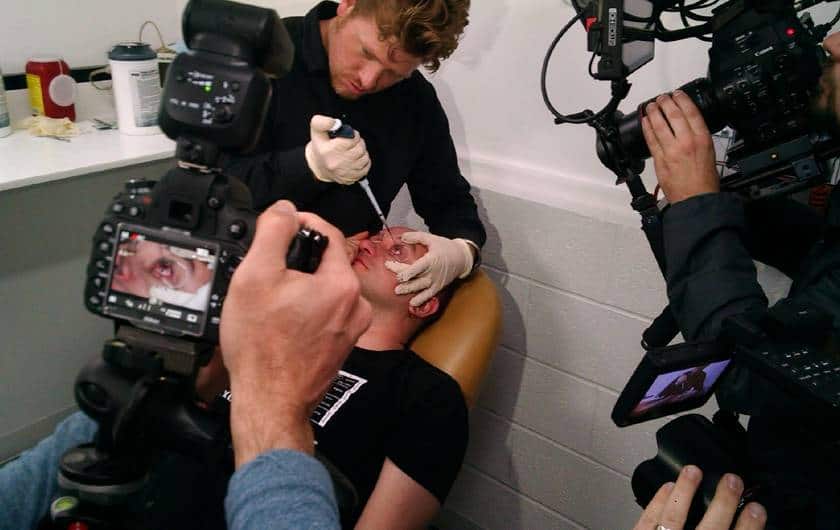A group of biochemical engineers in the US have managed to give a volunteer night vision, allowing him to see for 50 meters in almost complete darkness for several hours. To make things even better, they did this without any injections or lenses – only eye drops.

Science for the Masses, a group of biohackers based in Los Angeles, believed they could greatly enhance night vision for humans using a substance called Chlorin e6 (Ce6), which is derived from sea creatures and has been used for many years in cancer treatment research. It’s also been shown to be effective in the treatment of night blindness and improving dim light vision in people, so there seemed to be a lot of promise going for this approach.
Their idea was inspired by a patent filed in 2012, claiming that if you mix insulin, Ce6 and saline to someone’s eye, their retina absorbs much more light and they can see much better in the dark. The patent also mentioned that instead of insulin, you can use a substance called dimethlysulfoxide (DMSO). The Science for Masses guys thought “Why not use both?”.
“Going off that research, we thought this would be something to move ahead with,” the lab’s medical officer, Jeffrey Tibbetts, told the guys at Mic. “There are a fair amount of papers talking about having it injected in models like rats, and it’s been used intravenously since the ’60s as a treatment for different cancers. After doing the research, you have to take the next step.”
So they prepared their solution and used team member and biochem researcher Gabriel Licina as a guinea pig. First of all, they put a speculum in his eye so that he doesn’t blink during the procedure, then they applied the drops using a micropipette instead of a regular eye dropper, in order to be more precise.

“To me, it was a quick, greenish-black blur across my vision, and then it dissolved into my eyes,” Licina told Mic.
The effects were visible pretty soon, and Licina had to use lenses to block some of the sunlight; after a while, he even required sunglasses. After an hour, they went out of the lab and head out to a dark field to test the effects.
“The other test, we had people go stand in the woods,” he says. “At 50 meters, we could figure out where they were, even if they were standing up against a tree.” Each time, Licina had a 100% success rate. The control group, without being dosed with Ce6, only got them right a third of the time.
It worked! With freely available information, limited materials and with low costs, they managed to give a person night vision! There also seemed to be no side effects. This is yet another reminder that if you are curious and motivated, you can achieve great things even without many resources. I couldn’t agree more with their statement:
“For us, it comes down to pursuing things that are doable but won’t be pursued by major corporations,” Tibbetts says. “There are rules to be followed and don’t go crazy, but science isn’t a mystical language that only a few elite people can speak.”
So what’s next for them? Well of course, a lot more testing will have to be done, but initial results are extremely promising.
“Once you get the hard numbers, that’s it,” Licina says. “You take it and quantify it and write it down, and release it. … This is how science works. It isn’t flashy. But it makes it more accessible. It shows it can be done. If we can do it in our garage, other people can, too.”
I really love initiatives like this – can’t wait to see what happens next!
Source: Science for the Masses. Read the full paper here.



